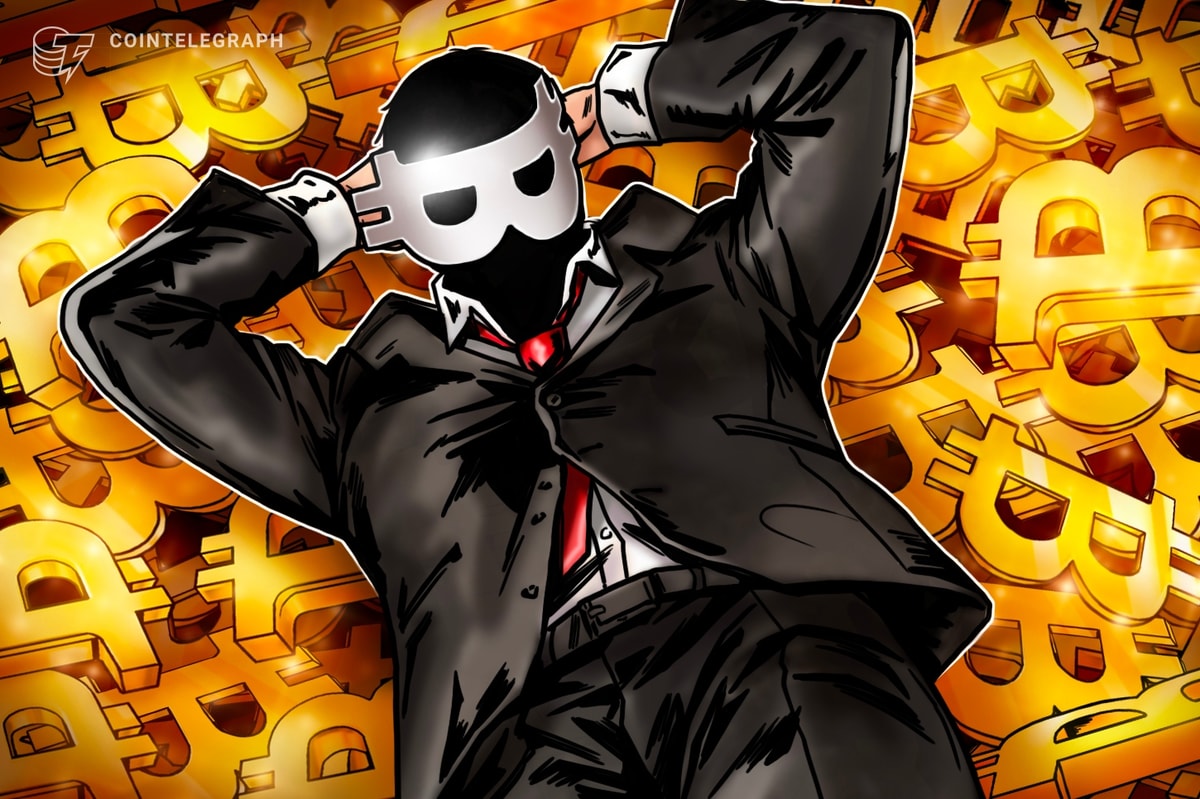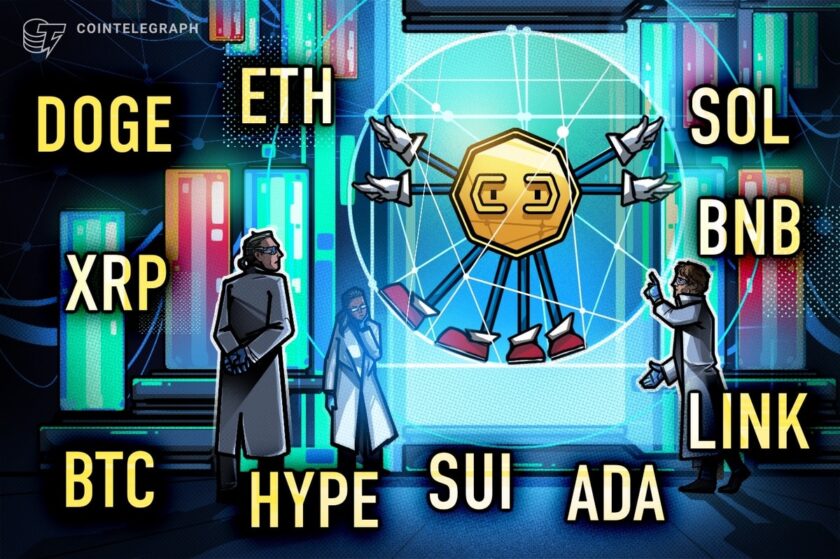Overview of Satoshi’s background holdings
Bitcoin was created in 2009 by the pseudonymous Satoshi Nakamoto, whose identity remains unknown. Between 2009 and 2011, Satoshi mined an estimated 1.1 million-1.5 million BTC — now worth over $100 billion — which has never been moved.
Satoshi’s massive Bitcoin (BTC) holdings were mined in Bitcoin’s early days, when competition was low and mining was easy. Their long silence has fueled speculation. Some believe the private keys are lost, while others see it as a deliberate decision to uphold Bitcoin’s ideals or avoid market disruption.
If Satoshi’s Bitcoin were ever moved, it could have a major impact on prices and investor confidence. Its continued dormancy shows Bitcoin’s strength as a decentralized system. It also keeps alive the mystery around Satoshi’s intentions, which continues to interest investors and crypto enthusiasts.
Did you know? Bitcoin’s journey began on Jan. 3, 2009, when Satoshi Nakamoto mined the first block, known as the genesis block. Embedded in its code was a message referencing a Times headline about bank bailouts, highlighting Bitcoin’s purpose as an alternative to the traditional financial system.
Potential triggers for the movement of Satoshi’s Bitcoin holdings
Satoshi Nakamoto’s Bitcoin stash, estimated at 1.1 million-1.5 million BTC, has remained untouched since 2009-2011. This silence has fueled ongoing curiosity about what might one day trigger its movement.
Analysts and crypto enthusiasts suggest several possible reasons:
-
Personal financial needs: Satoshi, or anyone with access, might need funds for a venture or to transfer assets to heirs, prompting a partial liquidation of the stash.
-
Ideological motives: The coins could be moved to make a statement, either to reinforce Bitcoin’s decentralization or to influence market dynamics strategically.
-
Recovery of private keys: If previously lost keys were recovered, the stash could suddenly become accessible.
-
External pressures: Governments might issue legal demands, or blockchain forensics could trace the coins more closely. A hack or security breach could also force movement.
-
Speculation about control: Some question whether Satoshi is still alive or if another entity holds the keys, deepening the mystery surrounding who controls the coins.
Did you know? On May 22, 2010, programmer Laszlo Hanyecz made the first real-world Bitcoin purchase — two pizzas for 10,000 BTC — which has become an annual celebration called “Bitcoin Pizza Day.” Today, those pizzas would be worth billions.
Market implications if the Bitcoin stash is moved
Any movement of Satoshi Nakamoto’s stash could significantly affect Bitcoin’s market dynamics. The immediate reaction would likely be panic selling, triggering a broad sell-off and sharp price volatility.
Such a reaction could mirror past events involving large Bitcoin movements. For instance, Mt. Gox distributions caused temporary price drops due to sudden increases in supply.
After the exchange’s collapse in 2014, trustees managed its remaining assets, which included hundreds of thousands of BTC. When parts of these holdings were later sold or distributed to creditors, the market saw brief price shocks.
In the long run, moving this stash could hurt Bitcoin’s image and credibility. It might raise doubts about its stability as a store of value. If viewed as a sign of lost confidence from its creator, investor trust could decline, discouraging institutional adoption by banks and hedge funds wary of higher risks.
On the other hand, a carefully managed move could inspire confidence. If it aligns with Bitcoin’s decentralized principles, it might be seen in a positive light. Still, the crypto community would closely analyze both the intent and execution.
Broader economic and social impacts
The movement of Satoshi’s Bitcoin stash could create effects far beyond financial markets. It could reshape both economic and social landscapes.
Here are possible economic and social impacts if the stash moves:
-
Redistribution of resources: Liquidating such a large holding could redistribute significant wealth. The funds might support new ventures, philanthropy or even shift global wealth dynamics. If directed toward underserved regions, the effect could be transformative.
-
Stringent oversight: Such a move could prompt tighter regulation. Governments might impose stronger controls to prevent tax evasion and illicit transactions, influencing the pace of crypto adoption worldwide.
-
Reactions of Bitcoin maximalists and skeptics: Within the crypto community, opinions would likely be split. Bitcoin maximalists might view the move as proof of the network’s resilience, while critics could see it as a sign of instability, fueling debate about Bitcoin’s purpose.
-
Funding of projects or humanitarian causes: The stash could also be used to fund major initiatives or charities. If done for altruistic reasons, it might enhance Satoshi’s legacy. However, uncertainty about intent, whether constructive or disruptive, would intensify discussions about Bitcoin’s role in society and reinforce its image as a polarizing economic force.
Did you know? To this day, no one knows the true identity of Satoshi Nakamoto. The pseudonymous creator disappeared from online forums in 2010, leaving behind an estimated 1.1 million BTC.
Technical and security considerations
Moving Satoshi Nakamoto’s stash would have major technical and security implications. Any transaction from Satoshi’s known addresses would appear instantly on the public ledger, drawing immediate attention from analysts tracking the movement.
Serious security risks could arise as scammers pretend to be Satoshi, using the hype to deceive investors or manipulate markets. A single transaction wouldn’t strain the network, but panic-driven trading could briefly raise congestion and fees. Mining patterns might also change if miners prioritize high-fee transactions linked to the stash, creating short-term centralization risks.
The community might respond with drastic steps. Some could propose forks or protocol changes to stabilize the network or ease market panic. These moves could spark heated debate and even divide the ecosystem.
Speculative scenarios regarding Bitcoin movement
Satoshi Nakamoto’s mysterious Bitcoin stash has given rise to endless speculation. Analysts and enthusiasts imagine different scenarios if the coins ever move. These range from stabilizing outcomes to catastrophic ones.
Here are the scenarios that might emerge if Satoshi’s Bitcoin stash moves:
-
A slow, transparent movement: A gradual and transparent movement could occur involving small transactions. Such actions could stabilize the market while demonstrating Satoshi’s continued belief in Bitcoin. This would keep institutional investors hooked without causing panic.
-
Sudden, large release of Bitcoin: A sudden sale of the entire stash could flood the market, crash prices and weaken trust in the system — possibly leading to a prolonged bear market.
-
No action: The coins might remain untouched, keeping speculation alive and sparking ongoing debates about Satoshi’s intentions while the market carries on as usual.
-
Nakamoto unraveling identity: If Satoshi moves the coins while revealing their identity, it would redefine crypto history. The move could strengthen Bitcoin’s legitimacy or invite tighter regulatory scrutiny.






